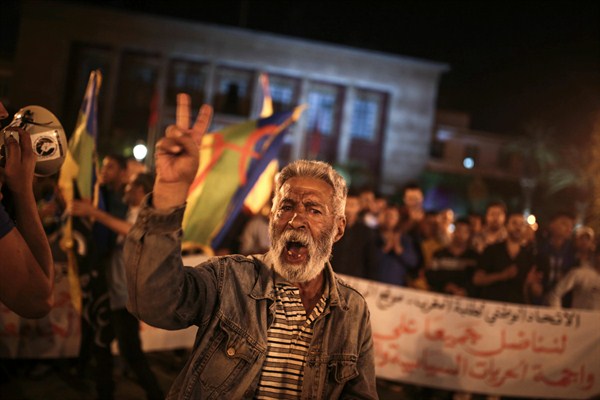Demonstrations are continuing across Morocco in the wake of the arrest of a number of popular leaders of an emergent social justice movement. Despite the government crackdown, protests against corruption and unfair privilege—known as “hogra” in the local Darija dialect of Arabic—have steadily unfolded in the city of Al-Hoceima on the northern Mediterranean coast. Last week, they spread to the capital, Rabat, and the main commercial hub, Casablanca.
Located in Morocco’s mountainous Rif region, Al-Hoceima has been at the center of the protest movement, known as al-Hirak al-Shaabi, or the Popular Movement, which has developed over the past seven months following the death of a fishmonger in a dispute with local authorities.
The most recent upsurge in unrest came after a ministerial delegation traveled to the Rif in May but were unable to meet with Hirak representatives. A few days later, Hirak’s leader, Nasser Zefzafi, interrupted a sermon at a local mosque during Friday prayers to call for more protests, a crime punishable by at least six months in prison. Zefzafi then went on the run. Morocco’s official press agency confirmed last Monday that Zefzafi had been arrested with a number of his supporters on suspicion of “undermining the security of the state.”

